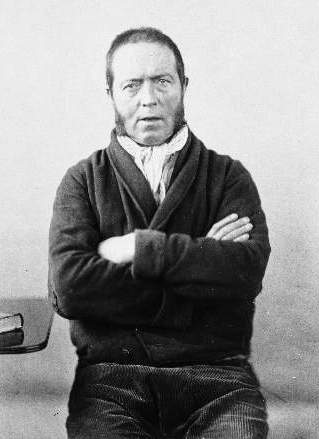
The M'Naghten rule(s) (pronounced, and sometimes spelled, McNaughton) is a legal test defining the defence of insanity, first formulated by House of Lords in 1843. It is the established standard in UK criminal law, and versions have also been adopted in some US states (currently or formerly), and other jurisdictions, either as case law or by statute. Its original wording is a proposed jury instruction:
that every man is to be presumed to be sane, and ... that to establish a defence on the ground of insanity, it must be clearly proved that, at the time of the committing of the act, the party accused was labouring under such a defect of reason, from disease of the mind, as not to know the nature and quality of the act he was doing; or if he did know it, that he did not know he was doing what was wrong.
Sally Clark was an English solicitor who, in November 1999, became the victim of a miscarriage of justice when she was found guilty of the murder of her two infant sons. Clark's first son died in December 1996 within a few weeks of his birth, and her second son died in similar circumstances in January 1998. A month later, Clark was arrested and tried for both deaths. The defense argued that the children had died of sudden infant death syndrome (SIDS). The prosecution case relied on flawed statistical evidence presented by paediatrician Professor Sir Roy Meadow, who testified that the chance of two children from an affluent family suffering SIDS was 1 in 73 million. He had arrived at this figure by squaring his estimate of a chance of 1 in 8500 of an individual SIDS death in similar circumstances. The Royal Statistical Society later issued a statement arguing that there was no statistical basis for Meadow's claim, and expressed concern at the "misuse of statistics in the courts".
Beyond (a) reasonable doubt is a legal standard of proof required to validate a criminal conviction in most adversarial legal systems. It is a higher standard of proof than the standard of balance of probabilities commonly used in civil cases because the stakes are much higher in a criminal case: a person found guilty can be deprived of liberty or, in extreme cases, life, as well as suffering the collateral consequences and social stigma attached to a conviction. The prosecution is tasked with providing evidence that establishes guilt beyond a reasonable doubt in order to get a conviction; albeit prosecution may fail to complete such task, the trier-of-fact's acceptance that guilt has been proven beyond a reasonable doubt will in theory lead to conviction of the defendant. A failure for the trier-of-fact to accept that the standard of proof of guilt beyond a reasonable doubt has been met thus entitles the accused to an acquittal. This standard of proof is widely accepted in many criminal justice systems, and its origin can be traced to Blackstone's ratio, "It is better that ten guilty persons escape than that one innocent suffer."
Barry Michael George is an English man who was found guilty of the murder of English television presenter Jill Dando and whose conviction was overturned on appeal.

On 20 June 1994, Robin and Margaret Bain and three of their four children – Arawa, Laniet, and Stephen – were shot to death in Dunedin, New Zealand. The only suspects were David Cullen Bain, the eldest son and only survivor, and Robin Bain, the father. David Bain, aged 22, was charged with five counts of murder. In May 1995, he was convicted on each of the five counts and sentenced to mandatory life in prison with a minimum non-parole period of sixteen years.
Actual innocence is a special standard of review in legal cases to prove that a charged defendant did not commit the crimes that they were accused of, which is often applied by appellate courts to prevent a miscarriage of justice.
The use of evidence under Bayes' theorem relates to the probability of finding evidence in relation to the accused, where Bayes' theorem concerns the probability of an event and its inverse. Specifically, it compares the probability of finding particular evidence if the accused were guilty, versus if they were not guilty. An example would be the probability of finding a person's hair at the scene, if guilty, versus if just passing through the scene. Another issue would be finding a person's DNA where they lived, regardless of committing a crime there.

David Ray Camm is a former trooper of the Indiana State Police (ISP) who spent 13 years in prison after twice being wrongfully convicted of the murders of his wife, Kimberly, and his two young children at their home in Georgetown, Indiana, on September 28, 2000. He was released from custody in 2013 after his third trial resulted in an acquittal. Charles Boney is currently serving time for the murders of Camm's wife and two children.
The Norfolk Four are four former United States Navy sailors: Joseph J. Dick Jr., Derek Tice, Danial Williams, and Eric C. Wilson, who were wrongfully convicted of the 1997 rape and murder of Michelle Moore-Bosko while they were stationed at Naval Station Norfolk. They each declared that they had made false confessions, and their convictions are considered highly controversial. A fifth man, Omar Ballard, confessed and pleaded guilty to the crime in 2000, insisting that he had acted alone. He had been in prison since 1998 because of violent attacks on two other women in 1997. He was the only one of the suspects whose DNA matched that collected at the crime scene, and whose confession was consistent with other forensic evidence.
In eyewitness identification, in criminal law, evidence is received from a witness "who has actually seen an event and can so testify in court".
Capitol Records, Inc. v. Thomas-Rasset was the first file-sharing copyright infringement lawsuit in the United States brought by major record labels to be tried before a jury. The defendant, Jammie Thomas-Rasset, was found liable to the plaintiff record company for making 24 songs available to the public for free on the Kazaa file sharing service and ordered to pay $220,000.
Sharon Faye Keller is the Presiding Judge of the Texas Court of Criminal Appeals. She is a Republican.

The World's End Murders is the colloquial name given to the murder of two girls, Christine Eadie, 17, and Helen Scott, 17, in Edinburgh, in October 1977. The case is so named because both victims were last seen alive leaving The World's End pub in Edinburgh's Old Town. The only person to stand trial accused of the murders, Angus Robertson Sinclair, was acquitted in 2007 in controversial circumstances. Following the amendment of the law of double jeopardy, which would have prevented his retrial, Sinclair was retried in October 2014 and convicted of both murders on 14 November 2014. He was sentenced to life imprisonment with a minimum term of 37 years, the longest sentence by a Scottish court, meaning he would have been 106 years old when he was eligible for a potential release on parole. He died at HM Prison Glenochil aged 73 on 11 March 2019. Coincidentally, he died on the same day the BBC's Crimewatch Roadshow programme profiled the murders.
Williams v. Florida, 399 U.S. 78 (1970), is a United States Supreme Court case in which the Court held that the Fifth Amendment does not entitle a defendant in a criminal trial to refuse to provide details of his alibi witnesses to the prosecution, and that the Sixth Amendment does not require a jury to have 12 members.
Jury selection in the United States is the choosing of members of grand juries and petit juries for the purpose of conducting trial by jury in the United States.
Glasser v. United States, 315 U.S. 60 (1942), was a landmark decision of the US Supreme Court on two issues of constitutional criminal procedure. Glasser was the first Supreme Court decision to hold that the Assistance of Counsel Clause of the Sixth Amendment required the reversal of a criminal defendant's conviction if his lawyer's representation of him was limited by a conflict of interest.
The death of Richard Oland occurred on July 7, 2011, when 69-year-old Canadian businessman Richard Oland, previously a vice-president with Moosehead Brewery, was bludgeoned to death in his office on Canterbury Street in Saint John, New Brunswick. His son, Dennis Oland, came under suspicion for the killing and was charged with second-degree murder.

Hae Min Lee was a Korean-American high school student who went missing on January 13, 1999, in Baltimore County, Maryland, before turning up dead on February 9, 1999, when her corpse was discovered in Leakin Park, Baltimore. Her autopsy revealed that she had been killed by way of manual strangulation.

Julius Darius Jones is an American prisoner and former death row inmate from Oklahoma who was convicted of the July 1999 murder of Paul Howell. His case has received international attention due to claims of innocence and controversy surrounding his trial and conviction. Jones was convicted of the crime on the basis of what the Oklahoma Court of Criminal Appeals later characterized as an "overwhelming" body of evidence consisting of "a co-defendant who directly implicated Jones, eyewitness identification, incriminating statements made by Jones after the crime, flight from police, damning physical evidence hidden in Jones's parents' home, and an interlocking web of other physical and testimonial evidence consistent with the State's theory."
Michael Weir is a British double murderer and serial burglar who was the first person in English legal history to have been convicted of the same crime twice. In 1999, he was jailed for the murder of 78-year-old war veteran Leonard Harris. Weir's conviction was quashed a year later at the Court of Appeal on a technicality, only for him to be re-convicted in 2019 in a 'double jeopardy' case after new evidence was found. Weir was also convicted in 2019 of the murder of 83-year-old Rose Seferian, who was also killed during a burglary five weeks after Harris, which made additional history as the first time a second murder charge was added to a double jeopardy case. Upon Weir's conviction at the Old Bailey in December 2019, judge Justice McGowan told the jury that they had made "legal history".






